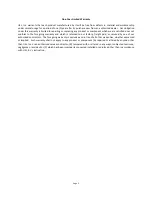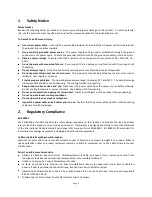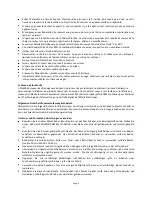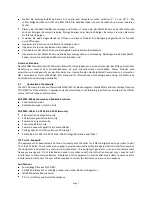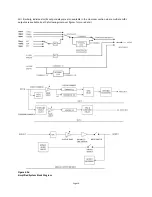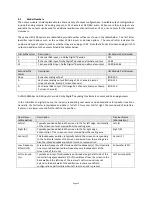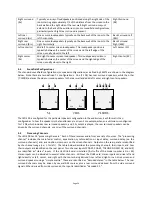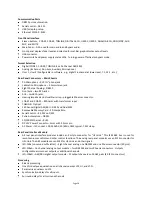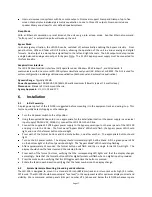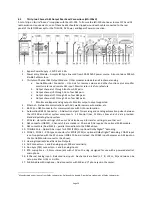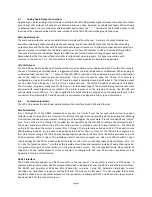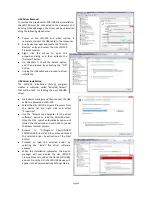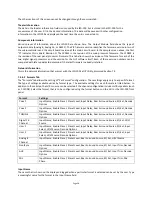
Page 14
5.1
Ls
C
L
R
Rs
7.1SDDS
Lc
Rc
7.1DS
Lrs
Rrs
LFE
C
L
R
LFE
C
L
R
LFE
Ls
Rs
Ls
Rs
Right surround
(Rs)
Typically an array of loudspeakers positioned along the right side of the
room starting approximately 1/3 of the distance from the screen to the
back wall and the right side of the rear wall. Right surround may not
extend to the back of the auditorium in some soundfield configurations,
particularly when Right rear surround is present.
Right Surround
(RS)
Left rear
surround (Lrs)
One or more loudspeakers typically on the back wall of the room to the
left horizontally.
Back Surround Left
(BSL)
Right rear
surround (Rrs)
One or more loudspeakers typically on the back wall of the room to the
right horizontally.
Back Surround
Right (BSR)
Left center (Lc)
Mid left to center screen loudspeaker. This loudspeaker position is
typically between the center of the screen and the left edge of the
screen, usually closer to the left.
Left Center (LC)
Right center
(Rc)
Mid right to center screen loudspeaker. This loudspeaker position is
typically between the center of the screen and the right edge of the
screen, usually closer to the right.
Right Center (RC)
4.4
Soundfield Configurations
The standard soundfield configurations (or speaker configurations) as defined by SMPTE are shown in the diagram
below. Note there are two defined 7.1 configurations. One (7.1DS) has rear surround speakers, while the other
(7.1SDDS) extends the side surround speakers to the rear wall and adds left center and right center speakers.
The JSD-100 is configured for the particular speaker configuration in the auditorium. Each format is then
configured as to how the speakers in that auditorium are driven. For example, when an auditorium is configured
for 7.1DS, which includes rear surround speakers, and 5.1 content is played, the rear surround speakers can be
driven by the surround channels, or a mix of the surround channels.
4.5
Processing Channels
The JSD-100 has 14 “processing channels.” Each of these receives audio from a variety of sources. The “processing
channel” includes the main fader control, equalization, synchronization or input delay, surround delay (on the
surround channels), and, as an option, crossovers on the screen channels. Outputs on the rear panel are identified
by the channel usage (i.e., L for left). The table below describes the processing channels, their inputs, and how
their outputs are identified on the rear panel. Two channel inputs (COAX1, COAX2, TOSLINK, NON/SYNC, and AUX)
are identified as “stereo” inputs. If the USL DI-84 card is installed (first suffix of the model number is D or M),
stereo inputs can be decoded to several other channels. Without the DI-84 card, stereo inputs can drive left and
right directly or left, center, and right with the center being derived from left and right or can drive screen and
surround speakers using a “simple matrix.” These are identified as “decoded stereo” in the table below. The rear
surround channels may be driven by several AES sources plus a rear surround derived from the side surround
signals. When derived from side surrounds, the input is identified as “decoded 5.1.”
Summary of Contents for JSD-100
Page 12: ...Page 12...


